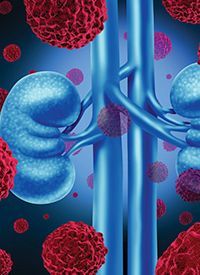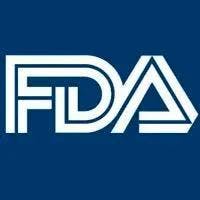News
Article
Urology Times Journal
Ipilimumab / nivolumab significantly improves 12-month nccRCC survival in SUNNIFORECAST
Author(s):
Late-breaking data from ESMO 2024 suggest ipilimumab / nivolumab may be a new standard of care for non-clear cell renal cell cancer.

Dual checkpoint inhibitor regimen ipilimumab (YERVOY) / nivolumab (OPDIVO) provided a significantly improved overall survival rate to standard of care (SOC) in the treatment of patients with non-clear cell renal cell cancer (nccRCC) over 12 months, according to new findings from the SUNNIFORECAST trial.
In late-breaking abstract data presented at the European Society for Medical Oncology (ESMO) 2024 Congress in Barcelona, Spain, this week, study author Prof. Lothar Bergmann, chair of the hematology / oncology section at the University Cancer Centre in Frankfurt, presented findings from the first prospective, randomized trial to compare a dual checkpoint inhibitor regimen with actual SOC in patients with nccRCC.
Along with observed an achieved primary endpoint of improved overall survival versus SOC at 12 months, Bergmann and colleagues additionally reported a longer median overall survival time among papillary high-risk patients receiving ipilimumab / nivolumab, as well as a consistent safety profile to that known of the 2 checkpoint inhibitors.
The observed combination of nivolumab plus ipilimumab, produced by Bristol-Myers Squibb, was approved by the US Food and Drug Administration (FDA) in May 2020 for the treatment of metastatic non-small cell lung cancer.
A rare, heterogenous group of >20 histological and molecular defined entities, nccRCCs are burdened by a “dearth” of robust clinical trial data for relevant therapies and, therefore, certainty around the optimal recommendation of care, Bergmann and colleagues noted.
“The statistical plan was based on the fact that the overall survival data in (nccRCC) are rather limited, and according to the literature, we assumed 12-month overall survival rate of approximately 65% and an increase of 15% by the combination therapy was considered clinically relevant.”
The team randomly assigned treatment-naïve patients with nccRCC 1:1 to either nivolumab 3 mg/kg intravenous (IV) combined with ipilimumab 1 mg/kg IV every 3 weeks for 4 doses followed by a flat dose of 240 mg IV every 2 weeks or 480 mg every 4 weeks, or SOC determined by participating investigators, until either disease progression or intolerance was observed.
Patients were further stratified based on papillary versus non-papillary cancers per International Metastatic RCC Database Consortium (IMDC) Risk Score. The trial’s primary endpoint was overall survival rate at 12 months; key secondary endpoints included overall survival at 6 and 18 months, as well as progression-free survival (PFS), overall response rate (ORR), time to progression (TTP), and safety and quality of life outcomes.
The assessment included 157 patients receiving ipilimumab/nivolumab and 152 receiving SOC. Median patient age was 62.3 years old; 70.9% were male and a majority (52.4%) reported a Karnofsky score no. of 100. A total of 178 patients with papillary RCC were stratified to either the treatment arm or SOC (n = 89 each). SOC was predominately tyrosine kinase monotherapy.
Bergmann and colleagues observed an overall survival rate of 86.9% among patients receiving ipilimumab/nivolumab at 12 months (95% CI, 80.24 – 91.46), versus 76.8% among patients receiving SOC (95% CI, 68.62 – 83.09; P = .0141). In the treatment arm, overall survival rates were 94.7% at 6 months (95% CI, 89.72 – 97.32; P = .067) and 76.6% at 18 months (95% CI, 68.69 – 82.79; P = .084). Each secondary endpoint was superior to the SOC arm.
Median overall survival for patients receiving ipilimumab/nivolumab was 42.4 months (95% CI, 35.24 – 55.54), versus 33.9 in the SOC arm (P = .292). “In this group, the overall survival showed a difference of approximately 9 months,” Bergmann said in his presentation. “(Forest plot data) shows benefit in several subpopulations, regarding younger patients, patients with poor risk IMDC, non-papillary (RCCs) seem to have better profit by this therapy.”
However, the ipilimumab/nivolumab arm did not achieve statistically significantly improved outcomes per ORR (25.4% [95% CI, 15.8 – 37.1] vs 23.3% [95% CI, 15.1 – 33.4]) nor median PFS (5.09 months [95% CI, 2.91 – 6.05] vs 5.55 months [95% CI, 5.29 – 7.21]) versus the SOC arm.
Regarding safety, investigators reported no new adverse events with the dual checkpoint inhibitor therapies; the most frequently observed adverse events in the treatment arm included skin reactions (48.4%), fatigue (42.9%), and pruritus (25.0%). Additionally, patients with papillary and non-papillary RCC showed similar benefit per overall survival rates with ipilimumab/nivolumab.
Investigators concluded the trial showed significantly improved overall survival rate at 12 months and prolonged median survival with the combination regimen versus SOC in patients with nccRCC. The data warrant further analysis into the promising treatment of these rare cancers.
“This randomized SUNNIFORECAST trial underlines a relevant clinical benefit of the combination in non-clear cell real cell carcinoma and may possibly be the new standard in these entities,” Bergmann said. “Of course, further data in these very rare diseases are needed in the future, and international cooperation is needed due to the rarity of this disease.”
References
- Bergmann L, Ahrens M, Albiges L, Gross-Goupil M, et al. Prospective Randomised Phase-II Trial of Ipilimumab/Nivolumab versus Standard of Care in non-clear Renal Cell Cancer: Results of the SUNNIFROECAST Trial. Poster presented: ESMO Congress 2024. Barcelona, Spain. September 13 – 17, 2024.
- US Food & Drug Administration. FDA approves nivolumab plus ipilimumab for first-line mNSCLC (PD-L1 tumor expression ≥1%). Press release. Published May 15, 2020. Accessed September 13, 2024. https://www.fda.gov/drugs/resources-information-approved-drugs/fda-approves-nivolumab-plus-ipilimumab-first-line-mnsclc-pd-l1-tumor-expression-1

Newsletter
Stay current with the latest urology news and practice-changing insights — sign up now for the essential updates every urologist needs.































